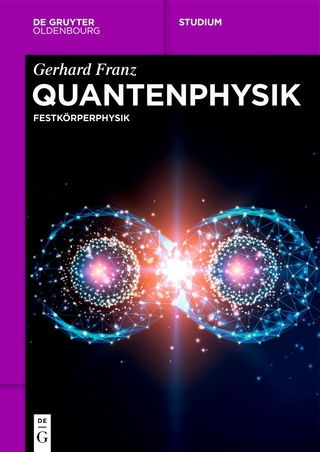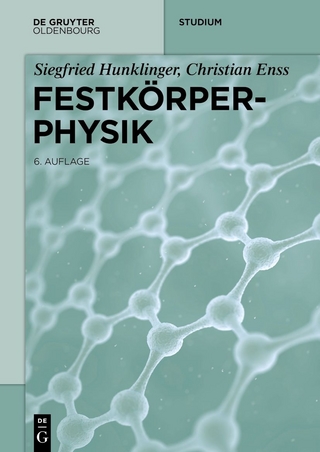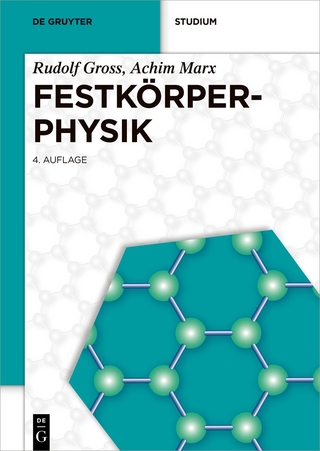
Graphene Science Handbook
Crc Press Inc (Verlag)
978-1-4665-9133-2 (ISBN)
The Graphene Science Handbook is a six-volume set that describes graphene’s special structural, electrical, and chemical properties. The book considers how these properties can be used in different applications (including the development of batteries, fuel cells, photovoltaic cells, and supercapacitors based on graphene) and produced on a massive and global scale.
Volume One: Fabrication Methods
Volume Two: Nanostructure and Atomic Arrangement
Volume Three: Electrical and Optical Properties
Volume Four: Mechanical and Chemical Properties
Volume Five: Size-Dependent Properties
Volume Six: Applications and Industrialization
This handbook describes the fabrication methods of graphene; the nanostructure and atomic arrangement of graphene; graphene’s electrical and optical properties; the mechanical and chemical properties of graphene; the size effects in graphene, characterization, and applications based on size-affected properties; and the application and industrialization of graphene.
Volume six is dedicated to the application and industrialization of graphene and covers:
The design of graphene- and biomolecule-based nanosensors and nanodevices
The use of graphene-based field-effect-transistor (GFET)-like structures as sensing substrates and DNA aptamers as sensing elements
Recent advances in graphene-based DNA sensors
The antibacterial properties of graphene-based nanomaterial (NM)
The chemical and physical properties of graphene and its current uses
The development of sensitive and selective field-effect transistors (FET) biosensors based on graphene
The unique properties of ordered graphene (G)
Various methods currently employed for the production of graphene nanocomposites
The supramolecular chemistry of graphene derivatives, and more
Mahmood Aliofkhazraei is an assistant professor in the Materials Engineering Department at Tarbiat Modares University. Dr. Aliofkhazraei’s research interests include nanotechnology and its use in surface and corrosion science. One of his main interests is plasma electrolysis, and he has published more than 40 papers and a book in this area. Overall he has published more than 12 books and 90 journal articles. Aliofkhazraei has received numerous awards, including the Khwarizmi award, IMES medal, INIC award, best-thesis award, best-book award, and the best young nanotechnologist award of Iran. He is on the advisory editorial board of several nanotechnology journals. Nasar Ali is a visiting professor at Meliksah University in Turkey. Earlier he held the post of chief scientific officer at CNC Coatings Company based in Rochdale, UK. Prior to this Dr. Ali was a faculty member (assistant professor) at the University of Aveiro in Portugal where he founded and led the Surface Engineering and Nanotechnology group. He has over 120 international refereed research publications, including a number of book chapters. Dr. Ali serves on a number of committees for international conferences based on nanomaterials, thin films, and emerging technologies (nanotechnology), and he chairs the highly successful NANOSMAT congress. William I. Milne, FREng, FIET, FIMMM, was head of the Electrical Engineering Division of the Engineering Department at Cambridge University from 1999 until 2014 and was Director of the Centre for Advanced Photonics and Electronics (CAPE) from 2004 until 2015. He earned a BSc at St. Andrews University in Scotland in 1970 and later earned a PhD in electronic materials at the Imperial College London. In 2003 he was awarded a DEng (honoris causa) by the University of Waterloo, Canada. His research interests include large area silicon-and carbon-based electronics, thin film materials, and, MEMS and carbon nanotubes, graphene, and other 1-D and 2-D structures for electronic applications. Cengiz S. Ozkan is a professor of mechanical engineering and materials science at the University of California, Riverside. He received his PhD in materials science and engineering at Stanford University in 1997. He has been elected as the Distinguished Engineering Educator of 2016 by the Engineers' Council. His research areas include energy storage technologies, renewable energy, design and processing of 2D and 3D nanomaterials, nanopatterning and nanoelectronics. He has more than 200 technical publications including journal papers and conference proceedings; 10 book chapters; five edited books, nearly 300 abstracts and 80 patent disclosures; he organized/co-organized more than 30 scientific and international conferences worldwide. Among his important contributions include: the first time growth of hierarchical three dimensional graphene nanostructures; development of a high-throughput metrology method for large-area graphene sheets; and high performance supercapacitors based on three-dimensional graphene nanostructures. Stanislaw F. Mitura has been a professor in biomedical engineering at Koszalin University of Technology since 2011. He is a visiting professor at the Technical University (TU) of Liberec and was awarded a doctor honoris causa from TU Liberec. He was professor of materials science at Lodz University of Technology from 2001 to 2014. He earned an MSc in physics at the University of Lodz (1974), a PhD in mechanical engineering at the Lodz University of Technology (1985), a DSc in materials science at the Warsaw University of Technology (1993). He has contributed to numerous papers and to seven books. Juana L. Gervasoni is head of the Department of Metal Materials and Nanostructures, Applied Research of Centro Atomico Bariloche (CAB), Comision Nacional de Energia Atomica, CNEA (National Atomic Energy Commission). She is also a member of the Consejo Nacional de Investigaciones Cientificas y Tecnicas (National Council of Scientific and Technological Research, CONICET, Argentina). She has been a member of the Coordinating Committee of the CNEA Controlled Fusion Program since 2013. Her area of scientific research involves the interactions of atomic particles of matter, electronic excitations in solids, surfaces, and nanosystems, the absorption of hydrogen in metals, and the study of new materials under irradiation. She has published over 100 articles in international journals. Her teaching at the Instituto Balseiro includes directing graduate and postdoctoral students. Along with her academic and research work, Dr. Gervasoni is heavily involved in the gender issues of scientific communities, especially in Argentina and Latin America.
BIOMATERIAL. NANOCOMPOSITES. ELECTRICAL/SENSOR DEVICES. NEW APPLICATIONS.
| Erscheinungsdatum | 24.05.2016 |
|---|---|
| Zusatzinfo | 102 Tables, black and white; 238 Illustrations, black and white |
| Verlagsort | Bosa Roca |
| Sprache | englisch |
| Maße | 210 x 280 mm |
| Gewicht | 1338 g |
| Themenwelt | Naturwissenschaften ► Physik / Astronomie ► Festkörperphysik |
| Technik ► Elektrotechnik / Energietechnik | |
| Technik ► Maschinenbau | |
| ISBN-10 | 1-4665-9133-1 / 1466591331 |
| ISBN-13 | 978-1-4665-9133-2 / 9781466591332 |
| Zustand | Neuware |
| Haben Sie eine Frage zum Produkt? |
aus dem Bereich


